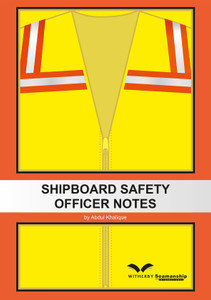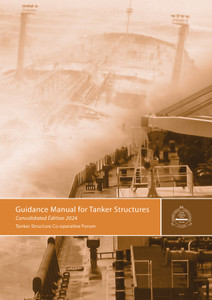
This publication provides guidance on best practice for confined space entry. It details appropriate PPE, safe entry policies and procedures, general hazards and atmosphere testing. It also includes survey preparation advice, such as approaches to tank cleaning and lighting.
Compiled by IACS, this publication contains detailed recommendations on all aspects of entering enclosed spaces safely. It includes risk management advice and explanation of the ‘permit to work’ system, ensuring safety issues are intercepted before tank operations take place. The guidelines are supplemented by a handy checklist that can be used on board. The book forms a common reference point for mariners on safe survey preparation and tank entry.
This publication is intended to assist Societies in developing confined space entry procedures or technical instructions for surveyors, according to a common reference standard of good practice.
The guidelines are structured in two parts. In the first part, general information concerning definitions and requirements to safely enter and work in confined spaces is summarised.
The second part helps the worker to recognise the hazards associated with confined spaces and gives detailed guidelines for safe survey preparation and entry.
A checklist for entry into confined spaces is also included.
Part 1 Confined Space Practices
Chapter 1 Definitions
1.1 Confined Space
1.2 Confined Space Entry
1.3 Competent Person
1.4 Responsible Person
1.5 Attendant (also ‘Standby Person’)
1.6 Marine Chemist
1.7 Adjacent Space
1.8 Toxic Product
1.9 Surveyor
1.10 Permit to Enter/Permit to Work (PTE/PTW)
Chapter 2 General Hazards
Chapter 3 Requirements
3.1 Training
3.2 Confined Space Entry Policy
3.3 Confined Space Entry Procedures
Chapter 4 Confined Space Entry
4.1 Testing of the Atmosphere
4.2 Preparation for Entering Confined Spaces
4.3 Personal Protection Equipment (PPE)
Part 2 Guidelines for Safe Entry of Confined Spaces
Chapter 1 General
Chapter 2 Confined Space Hazards
2.1 Hazardous Atmospheres from the Containment in the Tank
2.2 Work being Performed in a Confined Space
Chapter 3 Testing
3.1 General
3.2 Testing Instruments
Chapter 4 Ventilation
Chapter 5 Isolation of Space
Chapter 6 General and Physical Hazards
6.1 Temperature Extremes
6.2 Engulfment Hazards
6.3 Noise
6.4 Falling Objects
6.5 Slick/Wet Surfaces
Chapter 7 Guidelines for Use of Personal Gas Detectors
7.1 Function Test and Full Calibration
Chapter 8 Survey Preparations
8.1 Cleaning
8.2 Lighting
Annex Checklist for Entry into Confined Spaces
IACS
Dedicated
to
safe
ships
and
clean
seas,
IACS
makes
a
unique
contribution
to
maritime
safety
and
regulation
through
technical
support,
compliance
verification
and
research
development.
More
than
90%
of
the
world’s
cargo
carrying
tonnage
is
covered
by
the
classification
design,
construction
and
through-life
compliance
rules
and
standards
set
but
the
twelve
Members
Societies
of
IACS.
IACS
is
a
not
for
profit
membership
organisation
of
classification
societies
that
establish
minimum
technical
standards
and
requirements
that
address
maritime
safety
and
environmental
protection
and
ensures
their
consistent
application.
It
carries
out
this
responsibility
through
its
panels,
expert
groups
and
project
teams
and
provides
a
Quality
System
Certification
Scheme
(QSCS)
that
its
Members
comply
with,
as
an
assurance
of
professional
integrity
and
maintenance
of
high
professional
standards.
IACS
is
recognized
as
the
principle
technical
advisor
of
IMO.
- Number of Pages:
- 83
- ISBN:
- 9781856097536
- Published Date:
- June 2019
- Binding Format:
- Paperback
- Book Height:
- 234 mm
- Book Width:
- 155 mm
- Weight:
- 0 kg
- Preview:
- Yes
- Author:
ICAS
 Witherbys.com
Witherbys.com





